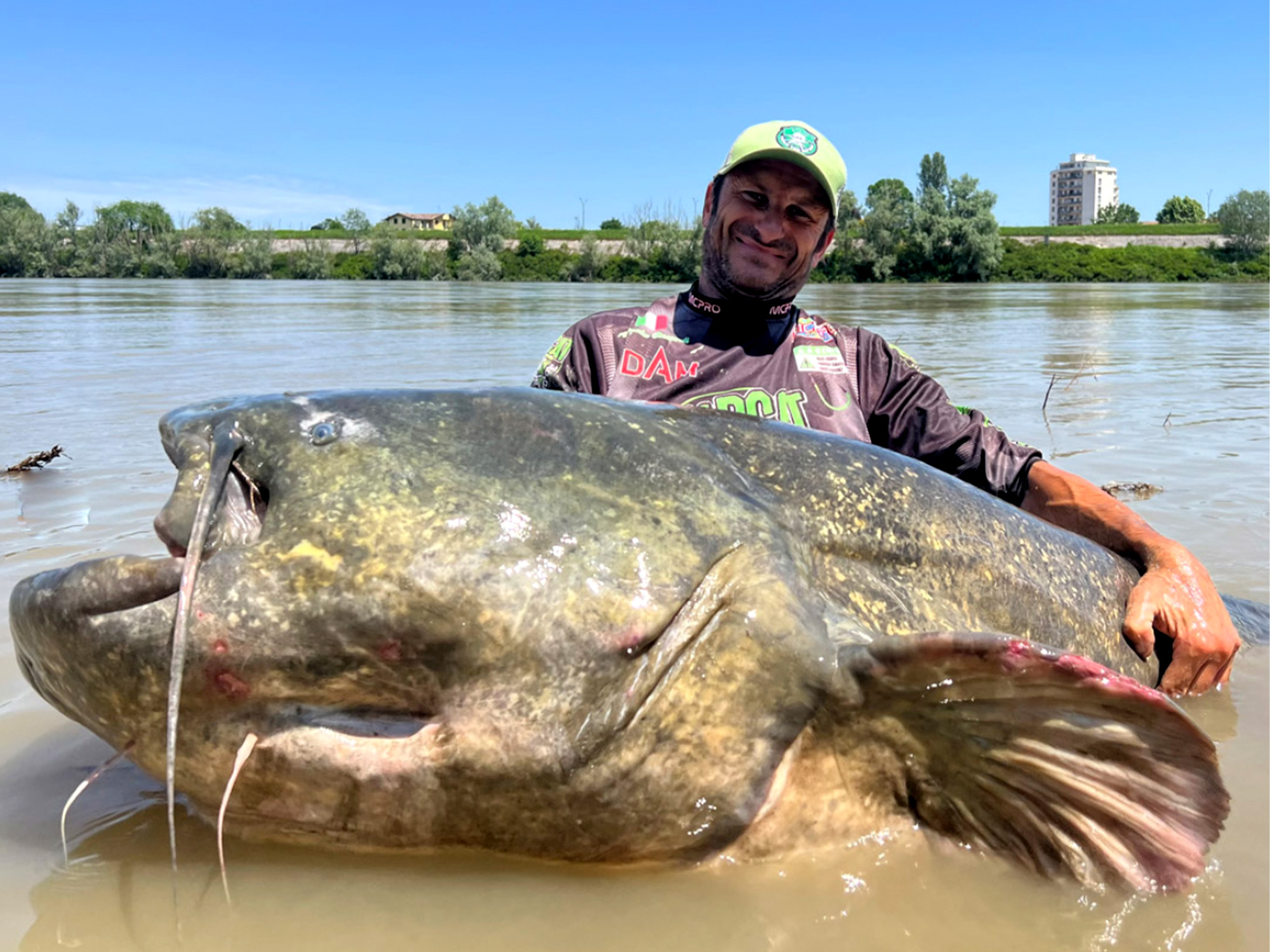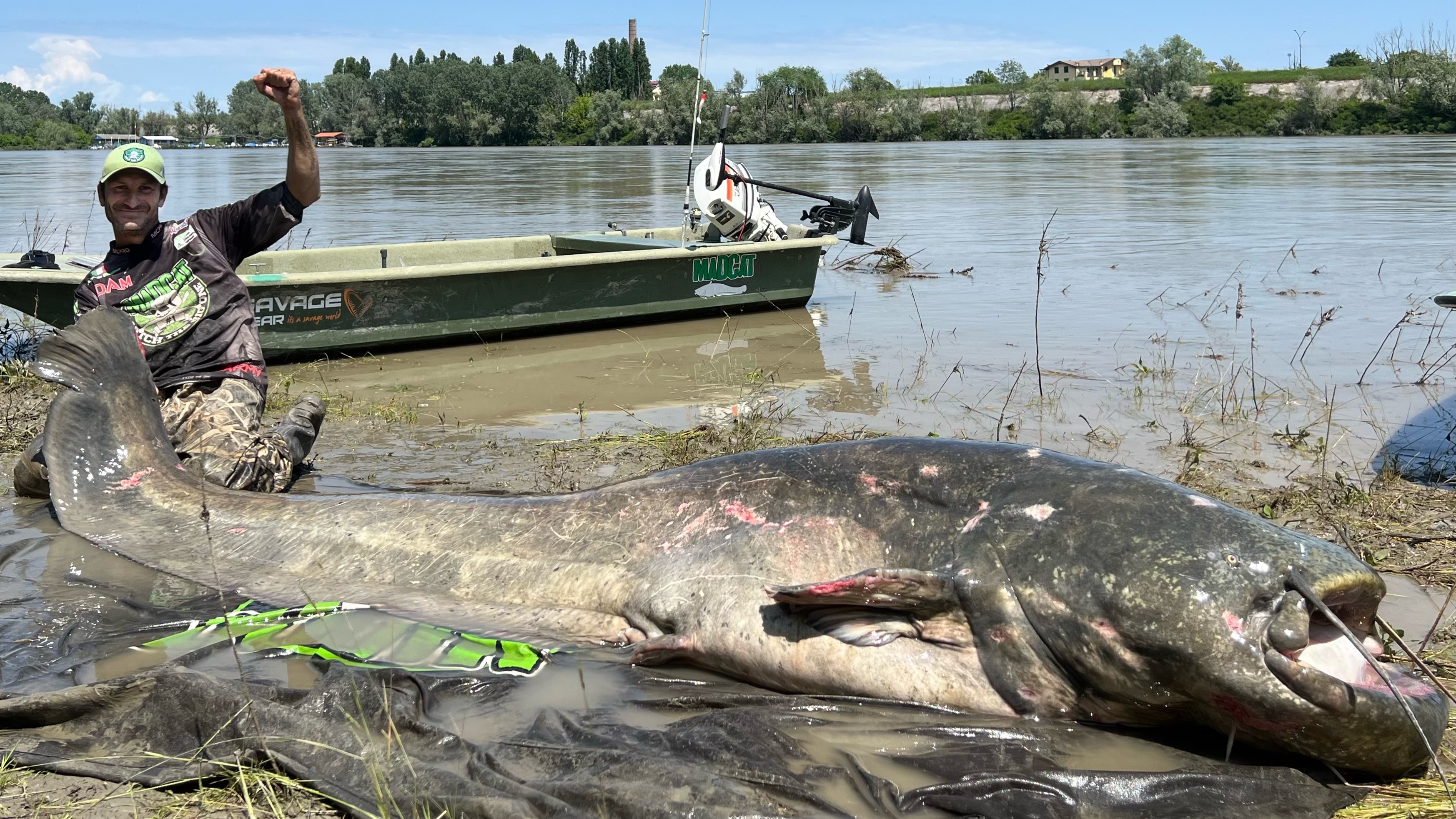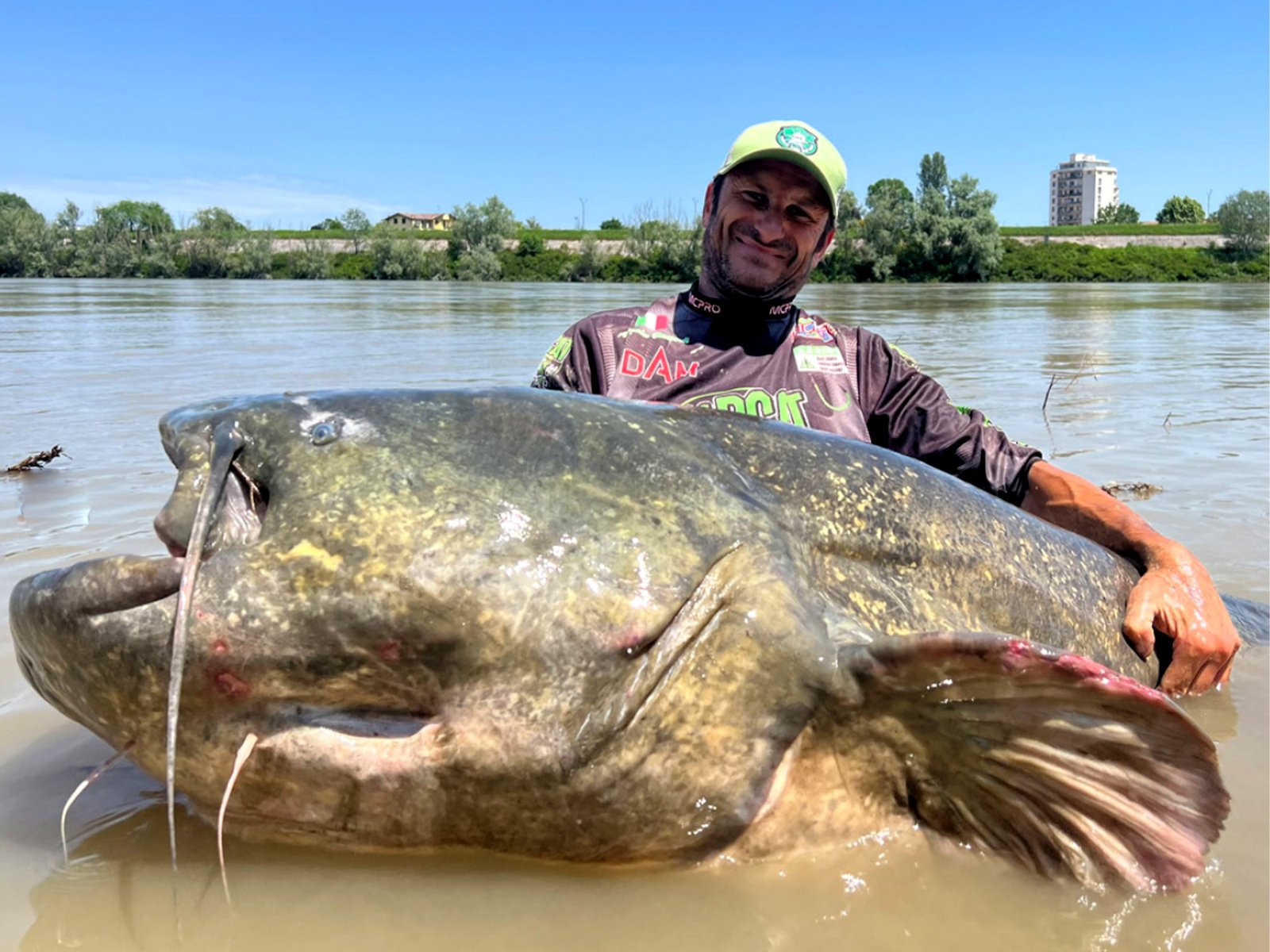The largest fish ever caught is a whale shark, weighing around 46,000 pounds. It was caught in 1949 near Pakistan.
Whale sharks are the largest fish species on Earth. These gentle giants can grow up to 60 feet long and weigh several tons. Despite their massive size, whale sharks are filter feeders, primarily consuming plankton. They are found in warm oceans and are known for their distinctive spotted patterns.
Whale sharks are fascinating to marine biologists and ocean enthusiasts alike. Their impressive size and gentle nature make them a popular attraction for divers. Conservation efforts are crucial to protect these magnificent creatures from threats like fishing and habitat destruction. The whale shark remains a symbol of the ocean’s incredible biodiversity.
Introduction To Record-breaking Fish
People have always been amazed by giant fish. The thrill of catching the largest fish ever is unmatched. In this section, we explore some of the biggest fish ever caught.
The Fascination With Giant Fish
Giant fish capture our imagination. Many people dream of catching a big fish. These fish are not only massive but also rare. Catching one is a remarkable achievement.
Fishing stories often highlight these record-breaking catches. These tales inspire others to try their luck. They create a sense of wonder and excitement.
Historical Significance Of Large Catches
Large fish catches have historical importance. Ancient cultures revered these catches. They saw them as symbols of strength and skill.
Throughout history, big fish have been part of legends. These stories have been passed down through generations. They remain a part of our cultural heritage.
| Year | Fish Species | Weight |
|---|---|---|
| 1959 | Great White Shark | 2,664 lbs |
| 1985 | Black Marlin | 1,560 lbs |
| 2001 | Mekong Giant Catfish | 646 lbs |
- Giant fish are rare and fascinating.
- Historical catches have cultural significance.
- These fish inspire many to take up fishing.
- Big fish capture our imagination.
- They create thrilling fishing stories.
- They have been part of legends for centuries.

Credit: m.youtube.com
Top Record-holding Fish Species
Fishermen and scientists have caught some truly gigantic fish. These record-holding fish species amaze everyone with their enormous sizes and unique features. Let’s dive into two of the most fascinating giants of the ocean.
Whale Shark
The whale shark holds the title for the largest fish ever recorded. This gentle giant can grow up to 40 feet long and weigh up to 20.6 tons. Their mouths can be 5 feet wide, capable of filtering vast amounts of plankton and small fish.
| Feature | Details |
|---|---|
| Length | Up to 40 feet |
| Weight | Up to 20.6 tons |
| Diet | Plankton and small fish |
Great White Shark
The great white shark is another record-holder known for its size and power. The largest great white ever recorded was 21 feet long and weighed 7,328 pounds. These sharks are apex predators, known for their powerful jaws and sharp teeth.
- Length: Up to 21 feet
- Weight: Up to 7,328 pounds
- Diet: Fish, seals, and other marine mammals
Famous Record-breaking Catches
Some fish catches stand out due to their incredible size. These record-breaking catches have amazed fishermen and the world alike. Let’s dive into some of the most famous catches ever recorded.
The Largest Ever Caught
The largest fish ever caught is a whale shark. This massive creature was caught in 1949 near Karachi, Pakistan. It measured an astonishing 41.5 feet and weighed about 47,000 pounds.
Whale sharks are gentle giants. They pose no threat to humans. These majestic creatures are filter feeders, consuming plankton and small fish.
Notable Mentions
| Fish | Length (feet) | Weight (pounds) | Location | Year |
|---|---|---|---|---|
| Great White Shark | 21 | 7,300 | Montauk, New York | 1986 |
| Tiger Shark | 17 | 1,780 | Marion Bay, Australia | 2004 |
| Blue Marlin | 16.4 | 1,402 | Vitoria, Brazil | 1992 |
| Pacific Bluefin Tuna | 9.8 | 1,496 | Oma, Japan | 2012 |
Other notable catches include the Great White Shark caught in Montauk, New York. This shark measured 21 feet and weighed 7,300 pounds.
In 2004, a Tiger Shark was caught in Marion Bay, Australia. It measured 17 feet and weighed 1,780 pounds.
The Blue Marlin caught in Vitoria, Brazil, in 1992 was another remarkable catch. This fish measured 16.4 feet and weighed 1,402 pounds.
Lastly, the Pacific Bluefin Tuna caught in Oma, Japan, in 2012 was 9.8 feet long and weighed 1,496 pounds.

Credit: www.outdoorlife.com
Techniques For Catching Giant Fish
Catching giant fish is a thrilling challenge for anglers. It requires skill, patience, and the right techniques. From modern fishing technology to traditional methods, each technique offers unique advantages.
Modern Fishing Technology
Modern fishing technology has revolutionized the way anglers catch giant fish. Fish finders and sonar devices help locate fish quickly. These tools provide real-time data on fish location, size, and depth.
Advanced fishing rods and reels are designed for strength and durability. They can handle the weight and power of large fish. Braided fishing lines offer high strength and low stretch. This ensures better control and hook-setting power.
Electric reels are useful for deep-sea fishing. They help reel in heavy fish with less effort. GPS systems aid in navigation and marking fishing spots. This ensures a higher chance of success.
| Modern Technology | Benefits |
|---|---|
| Fish Finders | Locate fish quickly |
| Advanced Rods and Reels | Handle large fish |
| Braided Fishing Lines | High strength, low stretch |
| Electric Reels | Less effort in deep-sea fishing |
| GPS Systems | Navigate and mark spots |
Traditional Methods
Many anglers still prefer traditional methods for catching giant fish. Handlining is one such method. It involves using a hand-held fishing line without a rod. This method requires skill and strength to pull in large fish.
Spearfishing is another traditional technique. Anglers use spears or harpoons to catch fish. This method is effective in shallow waters and requires precision.
Drift fishing uses the natural movement of the water to attract fish. Anglers let the bait drift with the current. This technique is often used in rivers and oceans.
- Handlining: Skill and strength needed
- Spearfishing: Effective in shallow waters
- Drift Fishing: Uses water current
Challenges In Measuring Record Fish
Measuring record fish poses many challenges. Accurate measurements are critical for official records. These measurements ensure fair competition among anglers worldwide.
Accurate Weight And Length
Accurate weight and length are essential for record fish. Digital scales provide precise weight measurements. However, scales must be calibrated regularly. Length measurements need consistency too. Use a standardized measuring tape for this. Ensure the fish lies flat and straight. Measure from the tip of the snout to the end of the tail fin. This method prevents discrepancies in recorded lengths.
Verification Processes
Verification processes are crucial for record validation. Multiple steps ensure accuracy. Witnesses are required during the weighing and measuring process. They provide an unbiased account of the event. Photographic and video evidence also play a role. These recordings offer visual proof of the fish’s size. They help verify the measurements taken. Certification by recognized authorities is the final step. Organizations like the IGFA (International Game Fish Association) handle this. They review all evidence and measurements. They then confirm the record if everything checks out.

Credit: www.livescience.com
Environmental Impact Of Catching Giants
Fishing for the largest fish ever caught can have serious environmental impacts. These impacts affect ocean health and fish populations.
Conservation Concerns
Conservation concerns arise when catching giant fish. Large fish are often key species in their ecosystems. Removing them can disrupt the balance of marine life. This can lead to the decline of other species.
Overfishing is another major concern. Catching too many big fish reduces their population. This can result in fewer fish reaching maturity. It also affects breeding cycles.
Sustainable Fishing Practices
Sustainable fishing practices are essential for preserving fish populations. Using these methods ensures that fish stocks remain healthy. One practice is catch and release. This allows fish to continue living and breeding.
Another method is setting size limits. Only fish of a certain size can be caught. This helps younger fish grow and reproduce.
Fishing quotas also help maintain fish populations. These limits control the number of fish caught each year. By following these practices, we can protect our oceans for future generations.
Legends And Myths Of Giant Fish
Throughout history, giant fish have fascinated people around the world. Stories about these enormous creatures have been passed down for generations. These tales often blend fact and fiction, creating a rich tapestry of myths and legends.
Folk Tales And Stories
Many cultures have folk tales about giant fish. These stories often depict these creatures as powerful and mysterious. In Japan, the tale of the Namazu tells of a giant catfish causing earthquakes. In ancient Greece, sailors spoke of the Kraken, a sea monster resembling a massive fish. These stories captured the imaginations of many, fueling curiosity and wonder.
Separating Fact From Fiction
While folk tales are entertaining, separating fact from fiction is important. Some giant fish stories have been proven true. For example, the Whale Shark is the largest fish in the world. It can grow up to 40 feet long. Another example is the Beluga Sturgeon, which can reach lengths of over 20 feet. These real-life giants show that some myths have a basis in reality.
| Folk Tale | Origin | Description |
|---|---|---|
| Namazu | Japan | A giant catfish causing earthquakes |
| Kraken | Ancient Greece | A sea monster resembling a massive fish |
Understanding the origins and descriptions of these stories can help separate truth from myth. Research and scientific discoveries have shed light on some of these ancient tales, revealing the real creatures behind the legends.
Future Of Record-breaking Fish Catches
The future of record-breaking fish catches looks exciting. Anglers worldwide are eager to catch the next big one. With advancements in technology, new records are likely to be set soon.
Potential New Records
Experts believe there are still many large fish in the oceans. These giants are waiting to be discovered. Some species have not been fully explored yet.
The ocean is vast and holds many secrets. Every year, new species are found. This increases the chances of finding record-breaking fish.
Conservation efforts also play a big role. Healthy fish populations mean bigger fish. Protected areas allow fish to grow larger.
Technological Advancements
Modern technology helps anglers catch bigger fish. Advanced fish finders locate large fish more easily. GPS systems help anglers find the best spots.
High-tech fishing gear is stronger and more reliable. This gear can handle bigger fish. It increases the chances of landing a record catch.
Social media and online communities share valuable tips. Anglers can learn from each other. This knowledge helps improve fishing techniques.
| Technological Tool | Benefit |
|---|---|
| Fish Finder | Locates large fish |
| GPS System | Finds best fishing spots |
| High-tech Gear | Handles bigger fish |
With these advancements, the future of fishing looks bright. Anglers are more prepared than ever before. New records are sure to be set.
Frequently Asked Questions
What Is The Largest Fish Ever Caught?
The largest fish ever caught is a whale shark. It measured 41. 5 feet long and weighed about 47,000 pounds.
Where Was The Largest Fish Ever Caught?
The largest fish ever caught was found off the coast of Pakistan. It was caught near Karachi in 1949.
How Much Did The Largest Fish Weigh?
The largest fish ever caught weighed approximately 47,000 pounds. It was a massive whale shark.
What Type Of Fish Was The Largest Ever Caught?
The largest fish ever caught was a whale shark. Whale sharks are known for their enormous size and gentle nature.
Conclusion
The largest fish ever caught continues to fascinate anglers and marine enthusiasts. This record-breaking catch reminds us of the vast mysteries beneath the ocean. Exploring these colossal creatures fuels our curiosity and passion for marine life. Keep the spirit of adventure alive and who knows, maybe you’ll be the next record holder!

